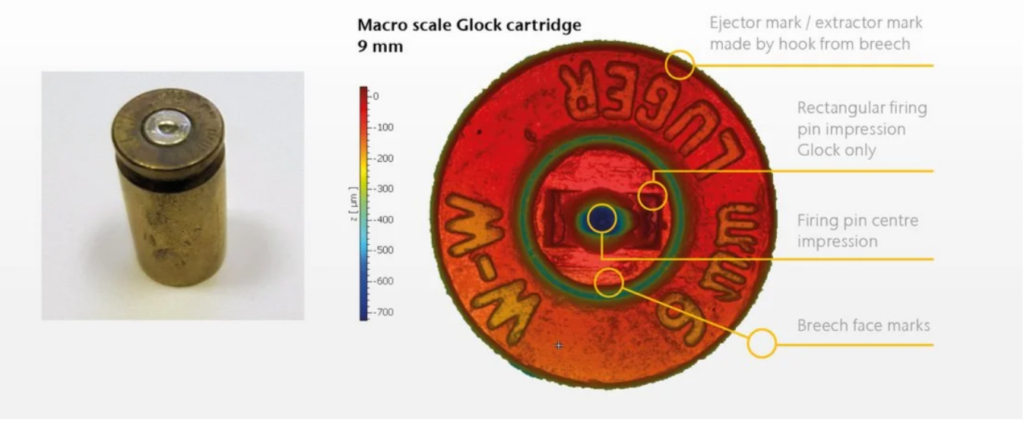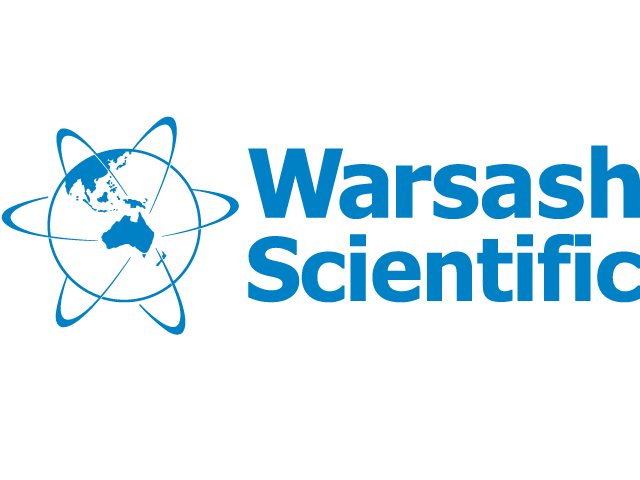
The smoking gun – How surface metrology reveals the finest forensic details
From: Polytec
Posted On: 18 Dec 2024
Forensic science plays a vital role in the criminal justice system by providing scientifically based information through the analysis of physical evidence. During an investigation, evidence is collected at a crime scene or from a person, analysed in a crime laboratory and then the results are presented in court.
Surface metrology (the science of measurement) can be used to study surfaces for the finest of physical details. This finest of information can be used to show how a surface was generated.
Macro scale ballistic tool mark identification
When a cartridge is fired from a gun, tell-tale markings are transferred from the inner surface of the firearm resulting in plastic deformation of the cartridge. The firing pin hits the primer cap of the cartridge, igniting the primer which in turn causes deflagration of the main propellant. This main propellant forces the slightly oversized bullet through the barrel of the gun, in which it is shaped by the rifling marks of the inner surface. Simultaneously, the cartridge case will be forced into the breech face of the barrel, thus imparting machining marks onto the cartridge base. Finally, the cartridge case is extracted from the breech of the firearm, leaving another impression on the cartridge.

Figure 1: The various spatial scales of information contained within each impression relate to groups of information regarding the firearm it was fired from. Larger scale information relates to the machining processes used on the firearm, and can therefore be used to determine the manufacturer of the firearm. Smaller-scale spatial information may be individual to the one particular firearm, and originate from handling/storage.
Current ballistic tool mark identification techniques rely on the imaging of these tool marks using greyscale microscopy, which is arguably a subjective and unrepeatable methodology. Using areal acquisition, height information of the tool mark can be accurately and objectively gained. Therefore, a shift to the areal acquisition would be a benefit in criminal proceedings, where the accuracy of the information could not be cast into doubt.
Here the surface topography information was captured using the TopMap Pro.Surf from Polytec. The TopMap Pro.Surf is a macro lens coherent scanning interferometer. This instrument offers a large field of view allowing the whole object to be measured within a single data collection routine, which greatly speeds the measurement process when you need non-contact 3D areal base surface topography. The Z-resolution is to the nanometer level providing high resolution to the finest of detail.
The technology of data collection can cope with polished, rough, dark and light surface types. All these surface effects are present on the end of the cartridge. Through the lifetime of the cartridge its end surface undergoes many changes and a final physical transformation at the point of firing. It gets polished, pushed, pulled, coated in carbon and ends up becoming a multi-faceted surface with different reflectivities and surface texture types.

Figure 2: Firearm examination is a forensic tool used to help the court determine whether two bullets were fired from the same gun barrel. During the firing process, rifling, manufacturing defects, and impurities in the barrel create striation marks on the bullet. Identifying these striation markings in an attempt to match two bullets is one of the primary goals of firearm examination.
Conclusion
Appropriate, high accuracy surface metrology practices and equipment are critical for the advancement of forensic science. Evidence that can be proved to be quantifiable could not be cast into doubt and could prove critical for any legal court proceedings.
Non-contact 3D areal surface topography from Polytec has been proven to be fast, stable and repeatable. The TopMap Pro.Surf although traditionally designed for the industrial manufacturing market, with it’s innovative optical measurement technology has shown itself to be suitable for challenging forensic measurements.
Find out more about surface metrology:


